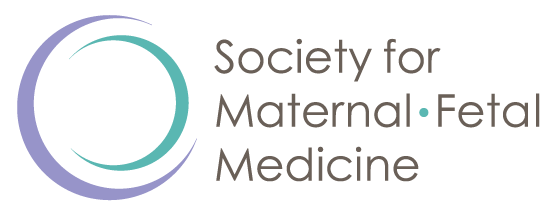
Cesarean Scar Ectopic Pregnancy
-
In a normal pregnancy, the embryo implants into the lining of the uterus and starts to grow. In a cesarean scar ectopic pregnancy, the embryo implants in or on the scar from a previous cesarean delivery.
-
Fortunately, these types of pregnancies are rare. They occur in about 1 in 1800 to 1 in 2500 pregnancies.
-
In some cesarean scar ectopic pregnancies, there is no heartbeat. For these pregnancies, there is no chance of a live birth. Even when a heartbeat is present, very few of these pregnancies have survived to birth. And as the pregnancy progresses, the risks of serious health problems increase.
As the embryo grows, it can cause the scar to break open (rupture of the uterus). The placenta may grow into the wall of the uterus and sometimes into the bladder (a condition called placenta accreta). With either of these situations, heavy bleeding (hemorrhage) can occur, even if the pregnancy does make it to term. A hysterectomy (surgery to remove the uterus) may be needed to stop the bleeding and save the pregnant person’s life.
Because of these major health risks, treatment to remove the pregnancy is recommended. Continuing the pregnancy is not advised.
-
One-third of cesarean scar ectopic pregnancies do not cause any symptoms. One-third cause painless vaginal bleeding, and the rest cause pain or other symptoms related to heavy bleeding, like rapid pulse or passing out.
-
A cesarean scar ectopic pregnancy is usually diagnosed during a first-trimester ultrasound exam. If you have had a cesarean delivery in the past, your healthcare provider will check for a cesarean scar ectopic pregnancy during your ultrasound exam.
-
Different treatments can be used, including surgery, medications, or combinations of these treatments. Which treatment is recommended for an individual depends on a number of factors. Other things to think about when choosing the best option include your current health, symptoms (if any), your desire for future childbearing, and the experience of your provider with different techniques.
Surgery
Surgery to remove the pregnancy requires anesthesia. Recovery from surgery may take several days to weeks, depending on the kind of surgery that you have. The pregnancy may be removed through the vagina or through incisions on the abdomen.
Another way to remove a cesarean scar ectopic pregnancy is with uterine artery embolization (UAE). A thin tube is placed into the main artery that leads to the uterus using a needle placed in the groin. Tiny pellets are then injected through the tube that block blood flow to the uterus, stopping the pregnancy and preventing bleeding. UAE is often used in combination with other treatments.
Medications
Medications can be injected into and around the pregnancy to stop its growth. Ultrasound may be used to help ensure the injection is given in the correct location. Sometimes, an extra dose of the same drug is also given into the thigh or other large muscle. It may take several weeks for the pregnancy tissue to disappear completely. During this time, ultrasound exams, lab work, and sometimes both are used to track what is happening. In some cases, additional treatment is needed to remove the tissue.
-
It’s hard to predict what will happen if you become pregnant after a cesarean scar ectopic pregnancy. In the few studies that have been done, cesarean scar ectopic pregnancy occurs again in 5% to 25% of people.
If you become pregnant again after a cesarean scar ectopic pregnancy, an early ultrasound exam (before 8 weeks of pregnancy) is recommended. Your baby may need to be delivered early to prevent serious complications like bleeding. Medications called steroids may be given to help the baby’s lungs and other organs mature. During delivery, special staff and equipment are on hand so that any problems can be dealt with quickly.
-
If you have had a cesarean scar ectopic pregnancy, you may want to prevent future pregnancies so that it doesn’t happen again. Sterilization (“having your tubes tied”) is one option. Sterilization is a permanent form of birth control that is done with surgery. The male version of sterilization is called a vasectomy and may also be an option if you have a male partner. Long-acting reversible contraception methods include the intrauterine device (IUD) and the arm implant. These options are as effective as sterilization. They have few side effects and may even have benefits for some women, such as a decrease in menstrual pain. Other methods are also available. Talk with your healthcare provider about what is most important to you in a birth control method. Together, you can decide on a method you are comfortable with.
Quick Facts
Cesarean scar ectopic pregnancy is a rare but serious complication of pregnancy in which the embryo implants into the scar from a prior cesarean delivery.
Treatment is needed to remove the pregnancy. Continuing a cesarean scar ectopic pregnancy is not advised. As the fetus grows, so does the risk of life-threatening problems for the mother, including heavy bleeding and rupture of the uterus.
There is a high risk that a cesarean scar ectopic pregnancy will happen again in the future pregnancy.
People who have had a cesarean scar ectopic pregnancy may want to prevent all furture pregnancies. The most effective birth control methods are permanent sterilization and the long-acting reversible methods (intrauterine device and implant).
Glossary
Anesthesia: The use of drugs to prevent pain during surgery or other procedures.
Bladder: The organ in the pelvis that stores urine.
Cesarean Delivery: Surgery in which a baby is delivered through a cut (incision) in the mother’s uterus.
Cesarean Scar Ectopic Pregnancy: A pregnancy in which the embryo implants in a previous cesarean scar in the inside wall of the uterus.
Embryo: During pregnancy, the stage of development from when the fertilized egg implants in the uterus through the first 8 weeks.
Hemorrhage: Very heavy bleeding that can be life-threatening.
Hysterectomy: Surgical removal of the uterus.
Intrauterine device (IUD): A small, T-shaped device that is inserted into the uterus to prevent pregnancy. There are two types of IUDs: the hormonal IUD, which releases a form of progestin, and the copper IUD. Both types last for several years and can be removed if you want to become pregnant.
Long-Acting Reversible Contraception Methods: Birth control methods that last for years, are highly effective in preventing pregnancy, and can be removed if you want to become pregnant. These methods include intrauterine devices (which are put into the uterus) and the implant (which goes under the skin in your upper arm).
Placenta: A special organ that develops during pregnancy. It allows the transfer of nutrients, antibodies, and oxygen to the fetus. It also makes hormones that sustain the pregnancy.
Placenta Accreta: A condition in which the placenta grows too deeply into the wall of the uterus and remains attached after childbirth. It can cause severe bleeding at the time of delivery. A hysterectomy (removal of the uterus) is usually needed to treat it.
Sterilization: A permanent form of birth control. In women, the fallopian tubes are cut and tied, closed off with bands or clips, or fused shut. For men, the tubes in which sperm travel are cut and tied or fused shut.
Ultrasound: Use of sound waves to create images of internal organs or the fetus during pregnancy.
Uterus: The organ in which the fetus develops during pregnancy.
Vasectomy: The male sterilization procedure in which the tubes that carry sperm are cut and tied or fused shut.
Last Updated: December 2023
